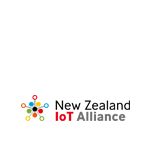Asia Pacific is one of the fastest growing regions in the smart port market and accounted for 53.6% share of the global smart port markets in 2020. In 2021 the estimated market size of the global smart port market was USD$1.7 billion, and this is expected to triple by 2026.
So what is driving the smart port market? There is a growing need to reduce carbon emission from the maritime industry and the adoption of industry 4.0, combining the infrastructure element and IoT technology alongside blockchain, AI and process automation, could be the key.
As digital transformation is shifting every industry, there is a need for a data strategy to allow for shared infrastructure and services, a connected and just-in time supply chain, a transparent Goods Import Status, automation, predictive maintenance and repair of assets, plus AI for safety and security. A data strategy at a smart port can also assist in lowering the logistic costs for business and consumers, and would allow access to a larger pool of required schools and provision of jobs, and would significantly lessen time and effort for freight forwarding.
However, when port technology is discussed, seldom does health and safety come to mind, as productivity and throughput of cargo takes precedence. This lends itself to the question, while we focus on placing measures to increase efficiency, are we considering the potential trade-off of safety?
With many continuous hours of operation, situational awareness and communication is imperative, particularly in areas operating both manual and automated machinery, and the potential for people to be in a shared space. As an example, it has been found that, while there are measures to ensure machines do not exit their allocated areas of operation, there is very limited intervention for a person to enter an area occupied by operational machinery/vehicles.
With growing interest for use-cases of industry 4.0 and the implementation of IoT alongside other innovative tech including 5G connectivity, AI, augmented reality, digital twins, autonomous vehicles etc., there is an aspect to technology enablement that can be implemented to ensure health and safety of workers as well as further advance how ports function.
Use cases can include utilising lone worker tracking, where a combination of wearable mobile devices, 5G, IoT and computer vision to track and monitor their health and safety, to provide a regular ‘heartbeat’ communication back to Control to detect falls. They can also have accountability for everyone in the event of an evacuation, with the use of IoT tags on all staff and visitors, this could improve the wellbeing of all staff at a port and ensure their safety.
What’s Happening at IoT Alliance?
Advanced Manufacturing Industry Transformation Plan:
The Advanced Manufacturing Industry Transformation Plan draft was launched for public consultation last week. This draft identified the importance of advanced manufacturing for Aotearoa, stating that it makes up 10% of our economy and is our largest contributor to exports, with export values of over $44 billion dollars in 2020.
Our government has identified that the advanced manufacturing sector has the potential to increase productivity, produce higher wage jobs, and allow Aotearoa to become a globally competitive low emissions sector through this new strategy. As part of the Advanced Manufacturing Industry Transformation Plan, there is a strong inquiry in emerging tech being developed with industry 4.0 through the implementation of technology such as IoT, AI, digital twins, virtual reality, robotics and automation to assist in improving the use of data to increase productivity and upskill our workforce.
NZ IoT Alliance will be producing a submission to highlight the importance of the internet of things alongside the employment of other technologies. We welcome your involvement contributing your thoughts and opinions in our submission.
If you would like to be involved and collaborate on this, please reach out to our team. We also highly encourage you to produce your own submission to increase the awareness and importance of location intelligence in the advanced manufacturing sector. You can find more information on the MBIE website and make a submission here.
Submissions are due by 5 pm on 13 July 2022.
Smart Cities Working Group
The NZ IoT Alliance, in collaboration with The Smart Cities Council Australia New Zealand, have proposed the establishment of a Smart Cities Working Group to bring together the Internet of Things solution ecosystem for smart cities. This will enable more liveable, workable and sustainable cities, towns and regions across Aotearoa New Zealand.
The purpose of this Working Group is to investigate and promote the IoT innovation being developed in New Zealand in order to support smarter cities, connect key stakeholders to drive this innovation, and grow the NZ IoT Alliance ecosystem. For more information please view our website.
If you have an interest in being part of growing our IoT Smart City ecosystem in New Zealand please contact us to join our working group.
Cyber Security Working Group
Cyber security is fast becoming one of the most sought after skills in the tech space. It’s estimated that there are currently 3.5 million unfilled cyber security jobs currently available globally. From threats of software attacks, intellectual property theft, cloud and network hacking, as well as data and information extortion, it’s no wonder that in this ever-increasing data centric world this market is exploding in demand.
Innovative data capturing technology powered by IoT continues to be vulnerable to security risks. Our cyber security working group aims to investigate the current cyber security issues in the IoT space and explore current and emerging solutions being developed in New Zealand.
If you wish to be part of growing our IoT cyber security ecosystem and join our working group, please contact us for more information.
Ngā mihi nui,
Alison Mackie, NZ IoT Alliance Executive Director






